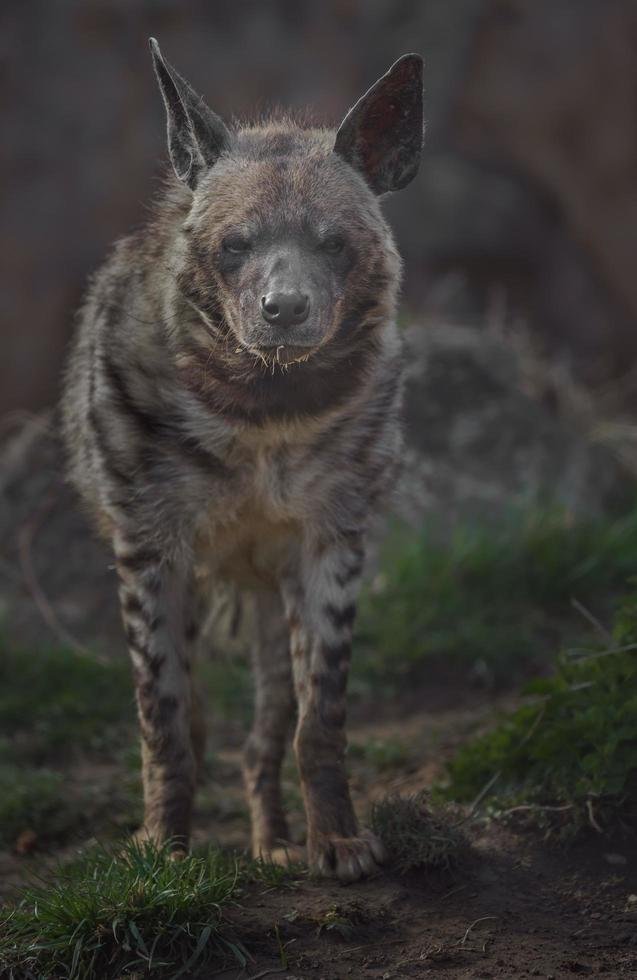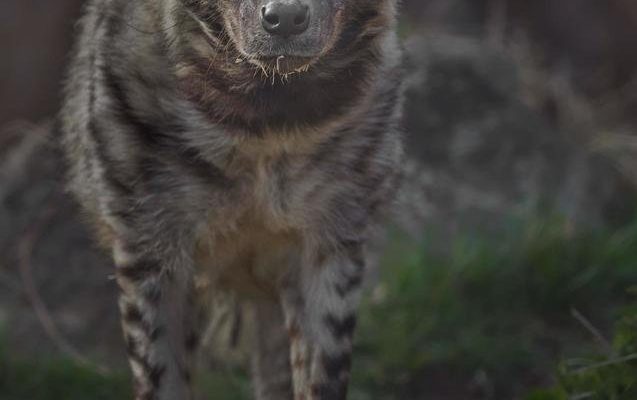
Striped hyenas, found primarily in northern and eastern Africa, have a surprising level of intelligence that stems from their complex social structures and adaptive behaviors. Their brains are wired for survival, and they’ve developed skills that help them thrive in their environment. Let’s explore the cognitive abilities and behaviors that make the striped hyena a captivating subject of study.
Understanding Striped Hyenas
To appreciate how smart striped hyenas are, we first need to understand the basics of their biology and social structure. Striped hyenas (Hyaena hyaena) are medium-sized carnivores and distinct from their more notorious relatives, the spotted hyenas. While they might not have the same fierce reputation, they’re equipped with a unique set of traits that showcase their intelligence.
Socially, striped hyenas are generally solitary or live in small family groups called clans. Each hyena has its role within the clan, which creates a dynamic social system that requires communication and cooperation. They communicate through a variety of sounds and body language, demonstrating their ability to convey messages and interact with one another. It’s this social aspect that plays a significant role in their cognitive development.
Cognitive Abilities of Striped Hyenas
Honestly, when we talk about animal intelligence, it’s easy to fall into the trap of thinking it only includes problem-solving skills or tool use. But cognitive abilities are broader than that. For striped hyenas, intelligence is often measured by their adaptability and learning capabilities. They can navigate their environment, find food, and even remember the locations of various resources.
One of the remarkable aspects of striped hyenas is their ability to adapt to changing circumstances. For example, if a food source becomes scarce, they’ll change their foraging strategies, showing their capacity to learn and adjust. This flexibility is a form of intelligence, often seen in animals that thrive in competitive or harsh environments.
Problem-Solving Skills
You might be wondering how striped hyenas tackle challenges in their everyday lives. One example is their unique scavenging behavior. Unlike their big cousins, striped hyenas often rely on carcasses and leftovers, which means they need to be clever about locating food. They have excellent memories, helping them recall where they’ve found food before, and are known to work together to access difficult food sources.
Moreover, striped hyenas demonstrate problem-solving abilities when it comes to food competition. If they encounter larger predators, they might wait until the coast is clear or work together to scare the predator off. This kind of strategic thinking showcases a level of awareness and social intelligence that’s quite impressive.
Communication and Social Structure
Striped hyenas aren’t just smart; they’re social animals that thrive on communication. Their vocalizations range from whoops to growls, each serving a purpose. For instance, certain sounds signal danger, while others might alert clan members about food sources. This rich vocabulary indicates a complex understanding of social dynamics.
Their social interactions are also fascinating. When they greet each other, they engage in ritualistic behaviors that reinforce their bonds. These social rituals can include nuzzling or specific vocalizations that convey affection or dominance. Essentially, their ability to communicate and navigate their social hierarchy reflects their intelligence.
Learning from Experience
Let me explain how learning plays a vital role in the lives of striped hyenas. Like many animals, they learn by observing their surroundings and the behaviors of others. Young hyenas often watch their elders as they hunt or scavenge, picking up techniques that will serve them in the future. This process of learning from experience is crucial for their survival.
Research has shown that striped hyenas can also learn from negative experiences. If a particular food source led to a confrontation with a larger animal, they might avoid that area in the future. This type of learning from past events reveals their capacity for memory and decision-making, essential traits for any intelligent species.
Comparative Intelligence: Striped Hyenas vs. Other Carnivores
When considering how smart striped hyenas are, it’s interesting to compare them to other carnivores. For example, while wolves are known for their teamwork and hunting strategies, striped hyenas exhibit unique problem-solving skills and adaptability. In fact, their scavenging lifestyle requires a different kind of intelligence focused on resourcefulness rather than direct hunting prowess.
While spotted hyenas may dominate social hierarchies, striped hyenas show different strengths, particularly in solitary or smaller social structures. This divergence in social structures allows for a diverse range of cognitive abilities across hyena species, highlighting that intelligence isn’t a one-size-fits-all trait.
As we’ve explored, striped hyenas are far more than just scavengers; they embody a fascinating blend of intelligence, adaptability, and social interaction. From their problem-solving skills to their rich communication methods, these animals remind us that intelligence takes many forms.
So, the next time you think about animal smarts, don’t forget about the striped hyena. Their unique adaptations and behaviors offer insights into the complexity of animal intelligence, inviting us to appreciate the diversity of the natural world. Just like our coffee chat, learning about these creatures makes us realize that there’s so much more to discover in the animal kingdom.

